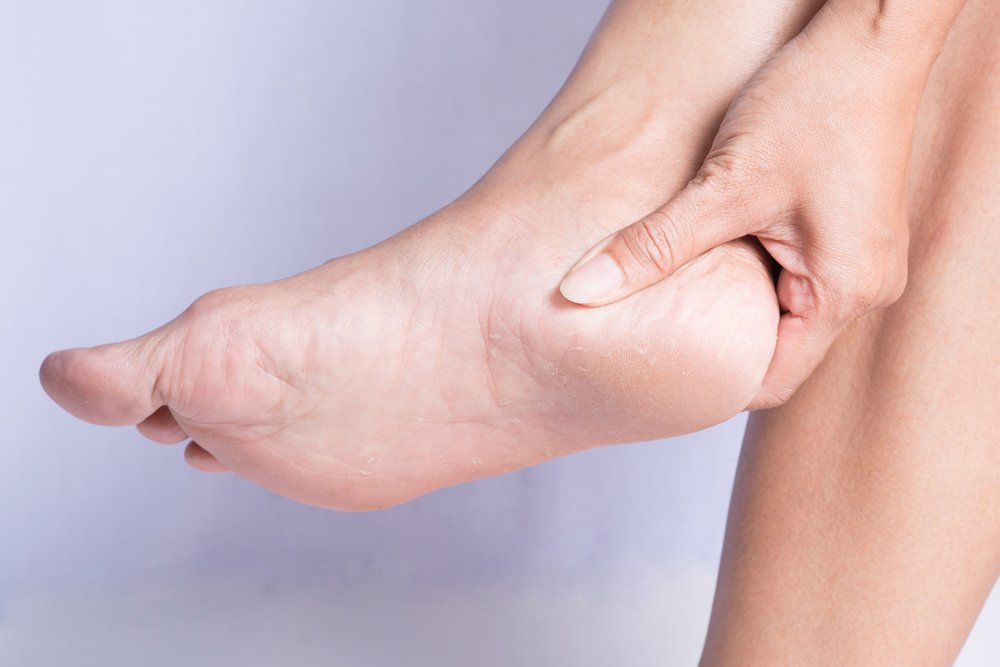Heel Pain Treatment
What Is Heel Pain?
Heel pain, a nagging condition caused by excessive stress on the heel bone (calcaneus) and surrounding tissue, is defined by discomfort in the posterior foot region below the ankle. Given our reliance on our feet, suffering from heel pain can make everyday life challenging.
What Are The Different Types Of Heel Pain?
Plantar fasciitis, the most well-known condition associated with heel pain, is characterized by inflammation due to unnecessary stress on the plantar fascia, a long ligament attaching the heel bone to the toes. When plantar fasciitis goes untreated, it can lead to a heel spur, protruding excess tissue that may add another level of discomfort to the condition.
Achilles tendinitis is a condition characterized by inflammation in the Achilles tendon. The tendon, which connects the heel to the calf muscle, is built to withstand high levels of impact but can still be overworked, leading to chronic pain in the heel region.
Bursitis, another heel pain-inducing condition, stems from an inflamed bursa, a fluid-filled sac that provides cushion between the heel bone, Achilles tendon, and surrounding ligaments. This inflammation is typically a result of unnecessary friction from a shoe digging into the heel.
Additional causes of heel pain include heel bone fractures, stone bruises, and inflammation of heel bone growth plates (Sever’s Disease) in adolescents.
What Are the Common Causes of Heel Pain?
The overstretching or overloading of the heel is the primary cause of heel pain, and high-intensity activities, excess body weight, and poor health can all be contributing factors.
Poor footwear that lacks foot support can also be the culprit of heel pain and make pre-existing conditions worse.
What Are the Symptoms of Heel Pain?
Heel pain often starts as mild tenderness and discomfort before progressing to swelling, redness, and bruising. Without proper rest and treatment, mild heel pain can become chronic.
Those suffering from heel pain will observe a direct connection between heel impact and pain level. Continued participation in sports and other rigorous activities while dealing with heel pain will likely exacerbate symptoms, making even lighter activities like walking more difficult.
What Are the Risk Factor Associated With Heel Pain?
High-impact athletes such as runners and jumpers face a high risk of suffering from heel pain, as do workers who spend long intervals on their feet. Participants from either group who neglect proper footwear heighten their chances of suffering from heel pain.
Obesity and pregnancy are both risk factors for heel pain due to the increased load the foot and heel area are required to support. Those suffering from irregular foot shapes will also face a higher risk of heel pain. Older populations are one final group at an elevated risk of heel pain due to deteriorating bones and muscles.
What Are the Best Prevention Methods for Heel Pain?
Much like a quality set of tires plays in safe driving, a quality pair of shoes is necessary for maintaining optimal foot and heel health. No matter what level of exercise you engage in, proper footwear that provides adequate cushion and ankle support is crucial in reducing the tension on your feet and keeping your heels healthy.
Maintaining a healthy weight and diet, warming up before exercise, and recognizing when your feet need rest are additional recommended preventative measures.
What Are the Best Treatment Options for Heel Pain?
Non-surgical
There are many treatment options for heel pain, and diagnosing the root cause will be important in creating the right recovery plan.
For new heel pain, non-steroidal anti-inflammatory drugs (NSAIDs) and rest are two treatment techniques you can implement at home. The first sign of heel discomfort is also an optimal time to evaluate your footwear.
If symptoms persist, consult your doctor, who may want to schedule an exam. During the exam, your doctor will evaluate the heel by touching it and applying pressure and may ask you to walk, stand, and stretch as part of the process.
If further clarity is needed, X-rays may help to identify the root cause. Once the root cause is detected, you and your doctor can proceed with a treatment plan. Cortisone injections are effective for conditions like Plantar Fascitis and Bursitis.
Undergoing physical or massage therapy may help you regain mobility by breaking up the affected tissue. Your healthcare provider may also discuss other recovery options, such as a change in footwear or orthotics (shoe inserts), night splinting, and icing or taping the affected area.
Surgical
Most heel pain cases do not require surgery, but it may be necessary if your condition fails to improve after six months of non-surgical treatment. Depending on your heel condition, the goal of the surgery may be to remove damaged tissue, remove a bone spur, or elongate the calf muscle so there’s less stress on the heel.
Recovery time post-surgery will vary depending on the procedure you undergo. Post-op rest will need to be a priority, and therapy will aid in your recovery. Overall, the outlook on heel pain surgical procedures is positive, and you should feel confident that you will regain full mobility, pain-free.
To learn more about Heel Pain treatment options in the Fort Myers, Estero and Naples area, contact Orthopedic Center of Florida.
Resources
- Achilles Tendon and Frequently Asked Questions
- Foot & Ankle Arthritis
- Bunions and Frequently Asked Questions
- Heel Pain
- Adult Acquired Flatfoot
- Ankle Sprains
- Charcot’s Neuroarthropathy
- Diabetic Foot
- Hammer Toe
- Ingrown Toenails
- Morton’s Neuroma
- Peroneal Tendonitis
- Plantar Fasciitis
- Stress Fractures of the Foot and Ankle
- Tarsal Tunnel Syndrome

Meet our Foot & Ankle Doctors:
Andrew M. Belis, DPM, FACFAS, FASPS
ABFAS Board Certified: Foot Surgery ABFAS Board Certified: Reconstructive Rearfoot & Ankle Surgery ACFAS OCF Foot & Ankle Surgical Fellowship Director Podiatry Specialties Conditions Treated Complex Trauma (Ankle and Foot...
Michael R. Black, DPM
Double Board Certified Podiatric SurgeonOrthopedic Services and Sports Medicine SpecialtiesPodiatry[button...
Jeffrey E. Kleiman, DPM
Board Certified Foot & Ankle SurgeonPodiatryAnkle and Foot...
Patricia Nicholas, DPM
Podiatry DoctorPodiatry SpecialtiesConditions TreatedCorns...




